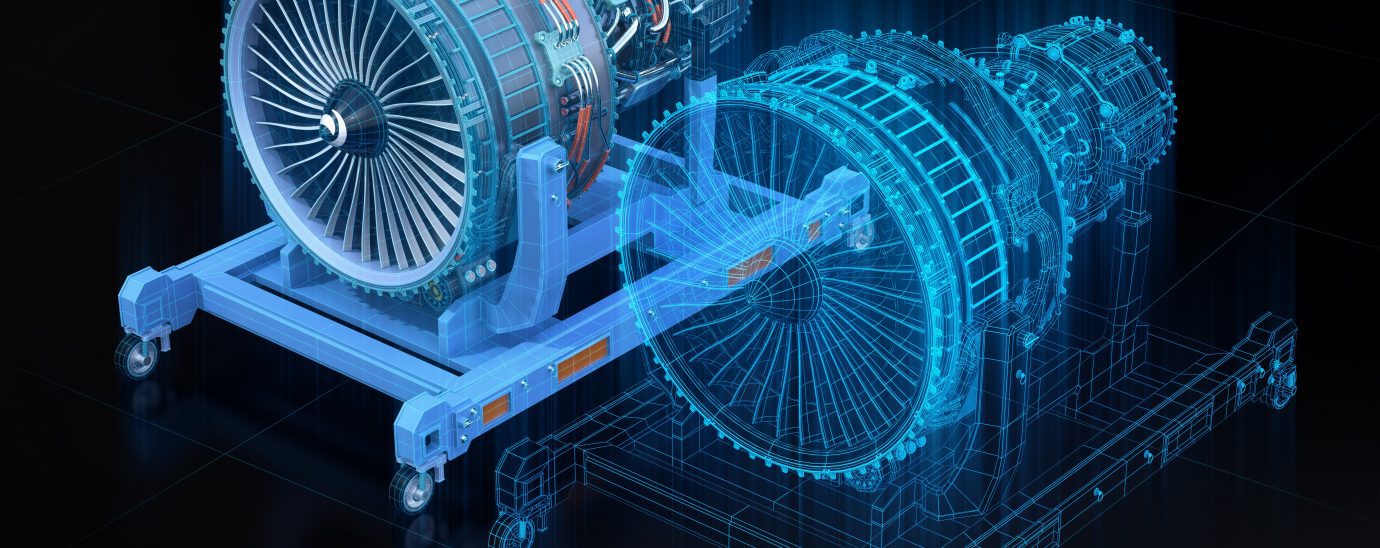Why aren’t more businesses taking advantage of simulation-based digital twin technology?

Frances Sneddon, CTO at Simul8, uncovers the advantages of simulation-based digital twin technology.
In 1970, the Apollo 13 mission suffered a terrible mid-flight malfunction. To diagnose and remediate the problem, NASA engineers built a ‘mirrored’ system to simulate the spacecraft and test various courses of action before deciding what to do next. As a result, the astronauts were saved, largely thanks to what many believe is the first instance of a ‘digital twin’ being employed to solve a problem.
Thanks to innovations in artificial intelligence and simulation modelling, today’s digital twin technology looks a lot different. Enabling something of a virtual testing laboratory, a digital twin will run alongside and in constant sync with a live system and offers the prospect of real-time monitoring and improvements in process efficiency. The model will be fed by data from across an organisation’s workflow and ERP systems to create an accurate replica of operations and processes, and from there planners can run simulations that play around with configurations to test different scenarios and outcomes, effectively fast-forwarding to find out the impact of any decision before it is implemented in the real world.
Surely this level of insight can offer benefits to every single type of business? So what’s holding them back?
There is a persistent myth that digital twins are the preserve of large-scale companies requiring huge investment in IT and technology to produce complicated and futuristic models of their operations. The good news, however, is that this is not the case. In fact, the technology has now been democratised to the point that just about any business can tap into the benefits of these tools. It’s not about creating a large and complicated replica of an entire organisation but about zoning in on individual processes to find ways to streamline and improve them or plan ahead to deal with any possible contingency. And it’s not the IT department that needs to drive this centrally either, but any level of planner can create, update and manage today’s digital twins.
Given how affordable and accessible they are, it’s baffling that digital twins are not treated as the core driver of efficiency within businesses of all shapes and sizes, and across multiple sectors. With such gains to be made, we should expect to see organisations creating a multitude of digital twins to cover every key operational process to ensure that it’s being delivered to its optimum and can be updated quickly with any changes in circumstances, such as a late supplier, a fault in the production line or a sudden surge in demand.
The imminent boom following the democratisation of digital twining
The accessibility of digital twins has been opened wide up, meaning that they can be used to assist everything from hospital capacity planning to how to upscale a distribution business or optimise a production process.
According to Gartner, nearly eight in 10 businesses are now readily exploring simulation-based digital twin technology, and just one glance at the potential use-cases and benefits we’ll outline shortly makes it very easy to see why.
A digital twin simulation provides a risk-free environment for organisations to test new layouts of services and foresee bottlenecks and other potential problems before they arise. What’s more, some of this simulation can be carried out in real-time, allowing businesses to not only uncover inefficiencies as part of a discovery process, but achieve round-the-clock improvement as part of their day-to-day decision making. It gives them unlimited access to ground-level observation without needing to be there in person at all, which can be particularly helpful for any organisation with processes that span different teams, sites or even countries.
Digital twins in action
You don’t have to be NASA to take advantage of digital twins. Take the grocery sector, for example. Typically, if a supplier wants to win a contract with a supermarket to supply several thousand bananas, demonstrating that it can fulfil the order is going to put it head and shoulders above the competition during the bidding phase. A digital twin could mirror the entire supply chain along with all potential variables and delays, and simulation technology could be used to demonstrate the supplier’s likelihood of being able to fulfil an order in a range of different scenarios. What happens in the event of a delay? What happens if one of the logistics companies goes belly-up? How might these events impact a supplier’s ability to fulfil an order? How dependable are they? Logistics companies, retail suppliers, hospitality venues, and other industry sectors could benefit from proving their ‘viability’ through a digital twin simulation when bidding for contracts.
Or how about manufacturing. Chrysler was able to create a digital twin of one small aspect of its assembly line, which it called TCF (trim, chassis, final), in order to run scenarios and experiment in a risk-free environment with the ultimate goal of increasing its throughput without increasing costs. Off the back of its findings, it saved over US$5mn and eventually designed a ‘line speed reduction’ tool that could then be rolled out to several of its other plants. By leveraging real-time simulation, companies like Chrysler could optimise their assembly lines and other processes ‘on the fly’ in accordance with demand. For example, what would happen if Chrysler decided to decrease the price of one of its vehicles by, say, $5,000 and then suddenly experienced a surge in demand? Could it double its throughput without increasing costs? Would that be a reasonable request? Simulation-based digital process twinning software could give decision-makers the answer they sorely needed within seconds.
Even hospitals are now benefiting from the technology. Using simulation, hospitals can forecast demand for patient beds in real-time, helping them increase capacity and reduce wait times for patients against their own benchmarked targets. For example, if a digital twin can give a hospital an idea of what number of patients to expect in the next 24-hour period, staff can allocate beds accordingly. This is crucial in an environment that could require certain patients to be isolated or have access to a particular ward. In other words, where hospitals choose to place a patient today can have a huge impact on their bed management tomorrow, and forward-running simulations can help staff make these decisions with confidence. The same technology can also help hospitals long-term by allowing them to run trial scenarios to see how their current operational setup might cope in the event of, say, a pandemic.
READ MORE:
- Proofpoint: why email is the top cybersecurity threat in 2021
- Supporting your remote workforce: cloud migration for your business in five steps
- SolarWinds IT Trends Report 2021: Building a Secure Future
- Snow Software on cybersecurity trends and challenges in 2021
This is where simulation and digital twin technology really come together to great effect. Simulation is nitro fuel for digital twins, and things are about to accelerate – fast. When it comes to replicating business processes, the potential applications are seemingly endless. If a business values rapid-fire decision making and the ability to visualise, enhance and optimise all manner of processes within their organisation with demonstrable value, they simply cannot afford to ignore digital twin technology for much longer.
For more news from Top Business Tech, don’t forget to subscribe to our daily bulletin!
